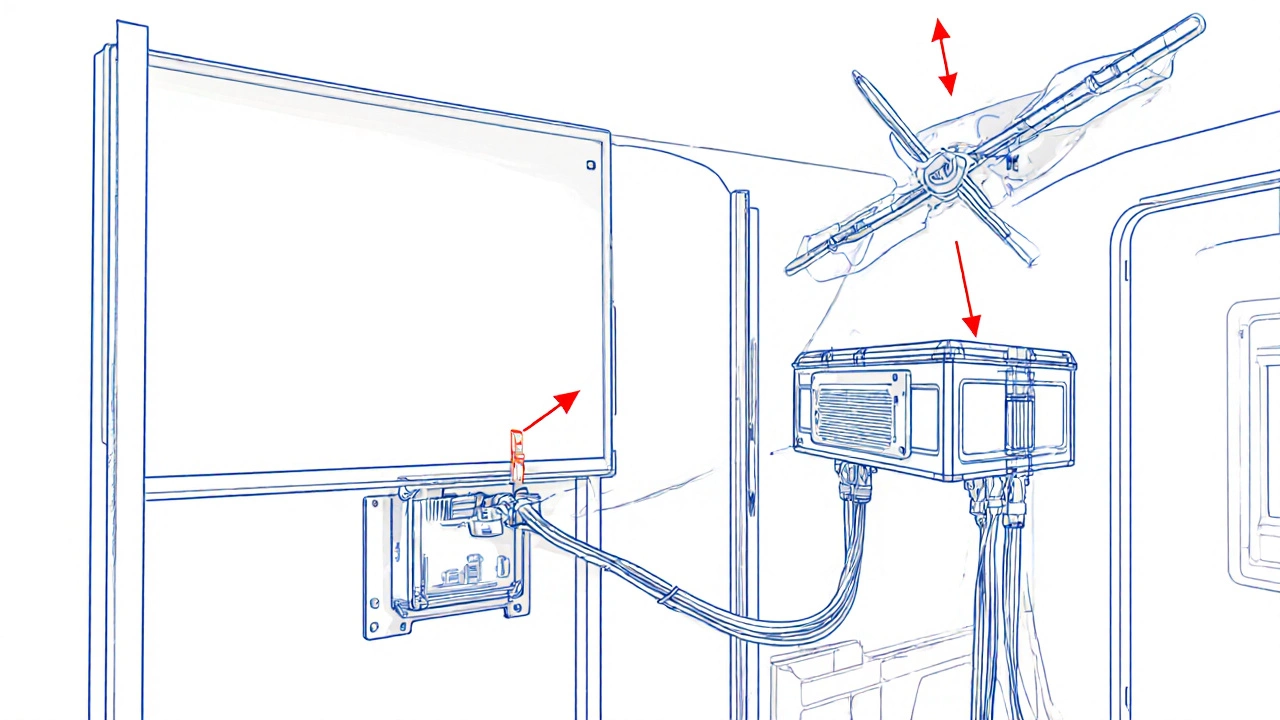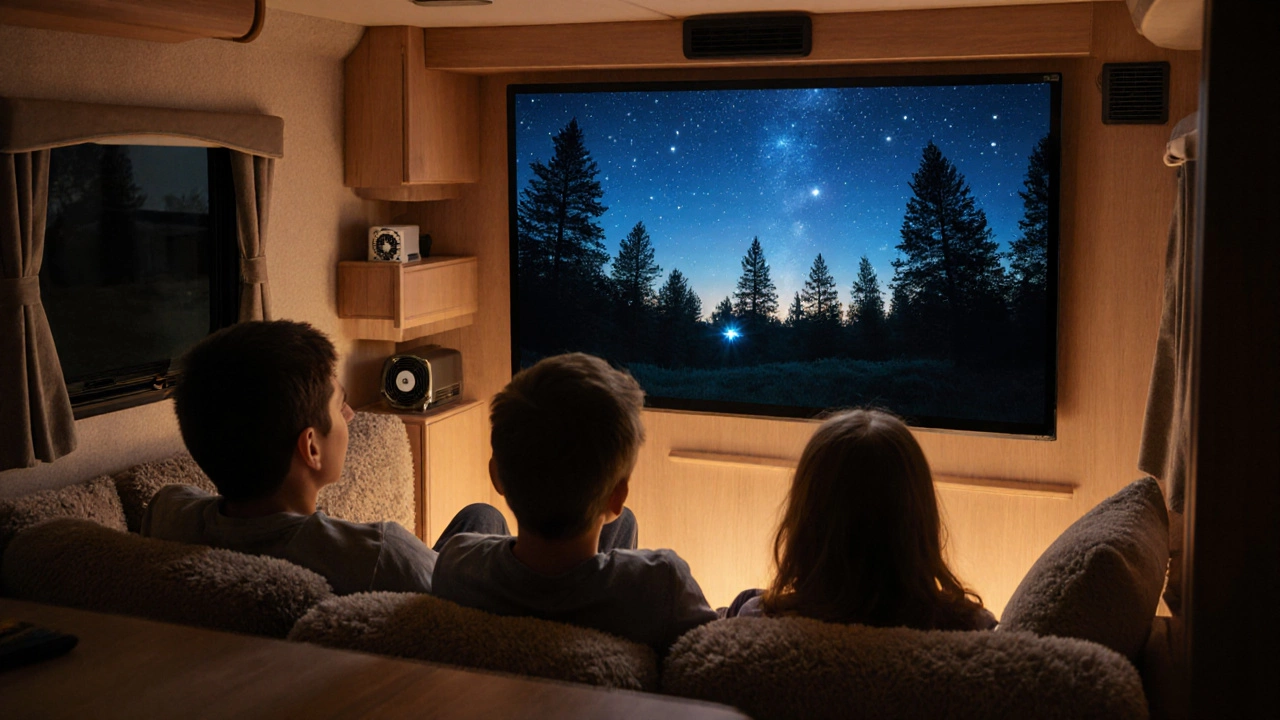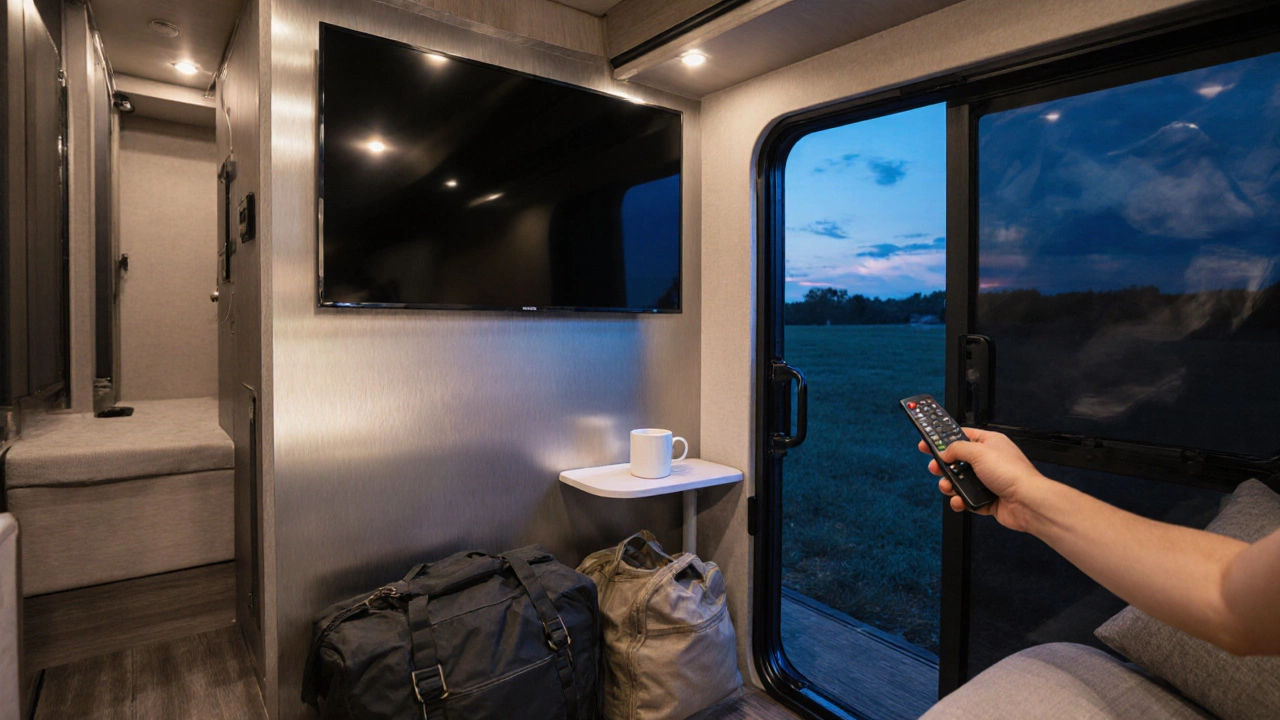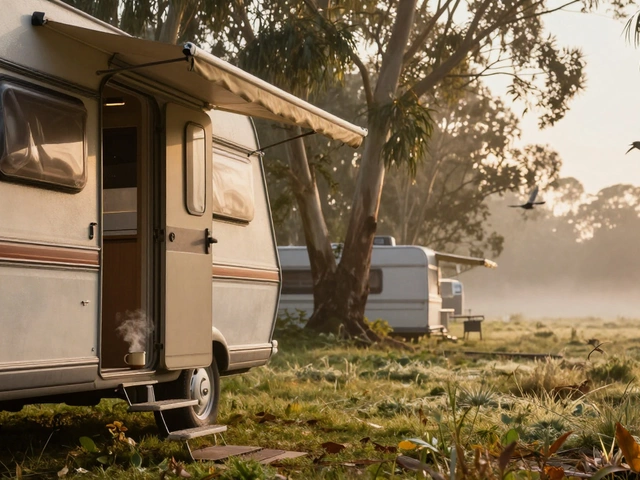Motorhome TV Power Calculator
Input Your Setup
* Based on 20% of battery capacity per hour * Inverter efficiency not included in calculation
Ever set up camp, plug in the plug‑in TV and wonder if that ordinary flat‑screen you bought for the living‑room will actually work inside a motorhome? You’re not alone. Many RV owners assume a TV is a TV, but the cramped space, limited power sources and signal quirks can turn a simple movie night into a headache. This guide breaks down everything you need to know - from power math to wiring tricks - so you can decide whether a regular TV belongs on your motorhome wall or if you should look at a purpose‑built option.
Understanding the Core Entities
Television is a display device that receives video signals and presents them on a screen. Modern sets range from 32‑inch LED panels to large 65‑inch OLED screens, each with specific power needs measured in watts.
Motorhome refers to a self‑contained vehicle designed for mobile living, equipped with its own utilities such as electricity, water and sleeping quarters. Inside, the electrical system typically runs on 12V DC from a battery bank, with the option to tap 110‑120V AC from shore power or a generator.
Connecting a TV to a motorhome involves three more key players:
- Power inverter converts 12V DC from the battery into 110‑120V AC needed by most household electronics
- Battery bank stores energy for all 12V devices and, via the inverter, supplies AC power when shore power isn’t available
- Antenna or satellite dish captures over‑the‑air broadcast or satellite TV signals, feeding them into the TV through coaxial or HDMI connections
Do the Numbers Add Up? Power Requirements Explained
Before you hoist a 55‑inch LED TV onto the wall, calculate the power draw. A typical 55‑inch LED consumes about 90W when in use. Add a few watts for HDMI, soundbar or external tuner, and you’re looking at roughly 100W total.
Most motorhome inverters are rated between 300W and 1500W. A 300W inverter can comfortably handle a single TV plus a small refrigerator, but you’ll need to watch the cumulative load. To keep the battery from draining, aim for a draw that stays under 20% of your battery’s amp‑hour (Ah) capacity per hour. For a 100Ah battery, that means no more than 20A at 12V, which translates to roughly 240W - plenty for one TV and a few lights.
When you’re plugged into shore power (usually 30A at 120V), the inverter bypasses the battery, and the TV runs off the campsite’s electricity - the simplest scenario.
Wiring the TV: Step‑by‑Step Installation
- Plan the placement. Choose a wall that’s close to an existing power outlet or your inverter’s AC outlet. Measure the TV’s dimensions and ensure there’s clearance for ventilation.
- Mount securely. Use a TV mounting bracket rated for the TV’s weight and the motorhome’s wall material (often thin aluminum or composite panels). Follow the bracket’s instructions, drilling only where reinforced studs exist.
- Run power. Plug the TV’s power cord into the inverter’s AC socket. If you have a built‑in AC outlet, use that instead. Verify the inverter’s output is a clean sine wave; low‑cost modified‑sine units can cause flickering on some LCD panels.
- Connect the antenna. Mount a roof‑mounted antenna (for over‑the‑air channels) or a collapsible satellite dish for TV packages. Run coaxial cable to the TV’s antenna input. If you prefer an HDMI‑only setup (e.g., streaming stick), you can forgo the antenna.
- Secure cables. Use cable clips or zip ties to keep cords tidy and prevent them from snagging when you move around the vehicle.
- Test the system. Turn on the inverter, then the TV. Scan for channels or launch the streaming app. Check for any noise or flicker that might indicate a power issue.

Potential Pitfalls and How to Avoid Them
- Battery drain. Forgetting to switch off the TV can quickly deplete the battery, especially on boondocking trips. Use a timer plug or the TV’s auto‑standby feature.
- Signal loss. Motorhomes move, so an antenna that worked at one site may lose alignment elsewhere. Opt for an adjustable, omni‑directional antenna that can be rotated easily.
- Inverter overload. Adding a second TV or a high‑wattage microwave can exceed the inverter’s rating. Keep a running list of all AC appliances and total their wattage.
- Heat buildup. Enclosed spaces can trap heat. Ensure the TV has at least an inch of clearance on all sides and consider a small ventilation fan if you live in hot climates.
Standard TV vs. 12‑Volt TV: Quick Comparison
| Feature | Standard TV (110‑120V) | 12‑V RV TV |
|---|---|---|
| Power source | Requires inverter or shore power | Runs directly from 12V battery |
| Typical size | 32‑65inches | 7‑22inches (compact) |
| Wattage | 80‑150W | 15‑40W |
| Cost | $300‑$1,200 | $150‑$400 |
| Installation complexity | Needs inverter, wiring, antenna | Plug‑and‑play, built‑in antenna |
When a Regular TV Makes Sense
If you already own a high‑definition TV and spend a lot of time at established campsites with reliable shore power, sticking with your existing set can be cost‑effective. The visual quality of a 55‑inch 4K LED is hard to beat, and you can still use a small 12‑V inverter (300W) to power it without overloading the system.
Key scenarios:
- Full‑time RVers who have multiple 12‑V inverters and a sizable battery bank (200Ah+).
- Family trips where kids want a big screen for movies.
- Owners who already have a wall‑mount and want to avoid buying a second TV.
When a Purpose‑Built 12‑Volt TV Is the Better Choice
On shorter trips, boondocking, or when weight and power budget are tight, a dedicated 12‑V TV shines. These models are designed for the RV market, often come with built‑in antennas, and consume far less power.
Ideal for:
- Weekenders who camp off‑grid and need to conserve battery life.
- Solo travelers who prefer a lightweight setup.
- Those who want a hassle‑free plug‑and‑play solution without an inverter.

Alternative Entertainment Options
Don’t forget that a TV isn’t the only way to enjoy media on the road. Consider these:
- Streaming sticks. Devices like Roku or Amazon Fire TV plug directly into an HDMI port and stream over Wi‑Fi. Pair with a 12‑V inverter or a small 12‑V TV.
- Portable projectors. Compact pico‑projectors can be mounted on a ceiling and work with a 12‑V power bank, giving a cinema‑style experience without a heavy TV.
- Tablets or laptops. For individual viewing, a tablet’s battery lasts for hours and needs no external power.
Maintenance Tips to Keep Your Setup Running Smoothly
- Check inverter heat vents every few weeks; dust can cause overheating.
- Inspect antenna cables for corrosion, especially after wet weather.
- Run a battery health test after each season to ensure the system can still support the TV’s load.
- Update TV firmware when you have internet access - newer firmware often improves power efficiency.
Bottom Line: Is a Normal TV Worth It?
Short answer: yes, if you have reliable shore power or a robust inverter‑battery setup; otherwise, a compact 12‑V TV or alternative streaming device will save you energy, weight and hassle. The key is to match the TV’s power draw to what your motorhome can safely supply.
Remember the golden rule - never let a TV be the sole drain on your battery when you’re off‑grid. Use timers, auto‑standby, or simply unplug when you’re not watching. With the right planning, you’ll enjoy movie nights under the stars without waking up to a dead battery.
Frequently Asked Questions
Can I run a 55‑inch LED TV on a 300W inverter?
Yes, a 55‑inch LED typically uses around 90‑100W, well within a 300W inverter’s capacity. Just ensure the total AC load (lights, fridge, charger) stays under the inverter’s rating.
Will a TV drain my battery if I forget to unplug it?
Absolutely. A 100‑W TV left on for 5hours draws about 5Ah from a 12‑V system, which can cut several days off a modest battery bank. Use a timer or the TV’s auto‑off feature to avoid this.
What type of antenna works best for a moving motorhome?
An omni‑directional, roof‑mounted antenna with a rotatable mount gives the best reception on the road. You can manually adjust it at each campsite for optimal signal.
Is a 12‑V TV worth the extra cost?
If you camp off‑grid frequently, the lower power draw and built‑in antenna make a 12‑V TV a smart investment. For full‑time site‑based living, a regular TV paired with an inverter is usually cheaper.
Can I use a streaming stick with a 12‑V TV?
Yes. Most streaming sticks need only 5‑10W via HDMI, so they run easily off a 12‑V TV’s power supply or a small inverter.






